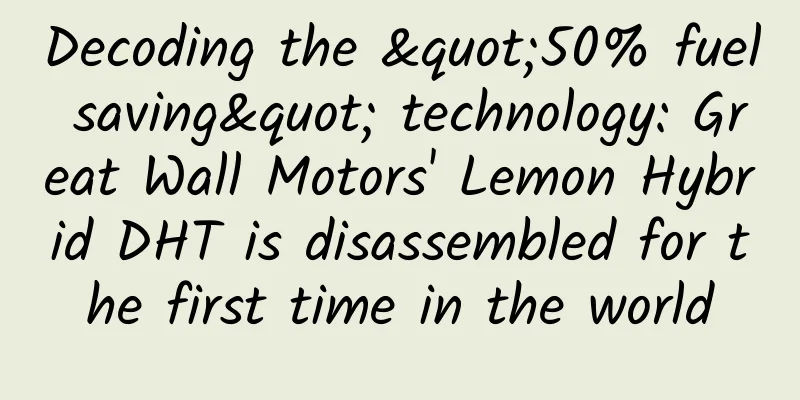China Automobile Dealers Association: June 2024 Automobile Market Pulse Report

|
In June 2024, the retail sales volume of the passenger car market reached 1.755 million units, a year-on-year decrease of 8% and a slight increase of 2% month-on-month. The cumulative retail sales volume in 2024 reached 9.828 million units, a year-on-year increase of 3%. Entering June, the Chinese auto market has not ushered in a new era of comprehensive price competition, but continues to slide on its established trajectory. This month, with the dual superposition of the Dragon Boat Festival holiday and the "618" consumer feast, major automakers have cleverly used this time window to strongly attract traffic through online channels and planned a variety of offline activities to attract consumers' attention and promote transactions. On the other hand, many parts of the country have entered the busy farming season, and seasonal factors such as hot weather and heavy rain in the south have an adverse effect on dealers' customer acquisition and transaction. Based on the performance in June and July, it is expected that the sales volume of the auto market will decline in the future. However, there are undercurrents beneath the surface of the market's prosperity. The various preferential policies launched by automakers and dealers are complicated, and the accelerated pace of new models launched by various brands has made consumers face unprecedented challenges when making choices. Under the information overload, they are inevitably dazzled. The rise of social media and online car comparison platforms has greatly facilitated consumers to obtain information and compare models, but it has also spawned a group of more rational and analytical car buyers. They not only pay attention to the immediate cost-effectiveness of the vehicle, but also have high expectations for the real experience of the new model in the long-term use in the future. They are cautious about the real value behind the complex preferential policies, and even worry about potential problems such as the quality of new cars and after-sales service, which has exacerbated the wait-and-see sentiment in the market. Although the Dragon Boat Festival holiday, the "618" consumer festival, and promotional measures such as trade-in have boosted market confidence to a certain extent and promoted a slight increase in sales volume month-on-month, behind this short-lived prosperity, there is a deep operating pressure on dealers. Faced with the urgent node of semi-annual task assessment and the continuous inventory pressure imposed by manufacturers, the actual operating conditions of dealers have not been fundamentally improved, but have shown a trend of further deterioration, especially in GP1. In summary, the Chinese auto market in June showed some vitality under the dual stimulation of holiday promotions and online marketing, but the increasing rationality and caution of consumers and the operating difficulties faced by dealers have jointly constituted the current complex and changing market situation. In the future, automakers and dealers need to grasp the pulse of the market more accurately, optimize marketing strategies, and improve service quality to cope with the increasingly fierce market competition and changes in consumer demand. By region, the lowest GP1 in the Northeast region was -28.8% in June; the highest inventory coefficient in the Southwest region was 1.86. Overall analysis of the luxury brand market Looking back at the luxury car market in June, we can observe a series of significant market dynamics. First, from the inventory coefficient, the luxury brand only increased by 0.04, showing that at the semi-annual task assessment node, although luxury brand manufacturers chose to push cars to dealers, they were cautious. At the same time, GP1 fell from -22.0% to -24.2%, combined with the performance of the inventory coefficient, showing the fierce competition among dealers in the luxury car market. The direct bidding between luxury brands and joint venture brands for mid-to-high-end products, coupled with the impact of high-end new energy products, has further reduced the profitability of the luxury brand market. In terms of brands, Mercedes-Benz, BMW and Lexus in the green light zone remain stable. Although Porsche manufacturers reduced inventory in May based on dealer feedback, inventory pressure is still high after the cars are delivered in June. In 2024, the market pressure on luxury brands will continue to increase. It is recommended that manufacturers pay more attention to the operating conditions of dealers in 2024, maintain a unified front with dealers, and jointly cope with market pressure. This month's luxury brand analysis shows that the top three luxury brands with the lowest inventory coefficients in June 2024 are Infiniti, Lexus and Bentley; GP1 has all declined. Overall analysis of the joint venture brand market In June 2024, the inventory coefficient of joint venture brands dropped significantly to 1.74, and GP1 continued to drop to -26.3%. GP1 continued to maintain the lowest level in the three major market segments. The joint venture brand market segment has gradually shown a trend of high competition pressure and declining market performance since 2021. With the increasing impact of new energy brands, joint venture brands will continue to face greater challenges in 2024. In terms of specific brands, the green area is dominated by Japanese brands, but the differences between brands are narrower than before, because they are facing the same impact from new forces. In this regard, among the joint venture brands, GAC Toyota's models such as Senna and Fenglanda have excellent sales performance, and the proportion of hybrid models continues to rise. It is accelerating electrification in an all-round way, which will help improve the profitability of dealers. In June 2024, all mainstream joint venture brands GP1 declined; the top three with reduced inventory coefficients were GAC Toyota, FAW-Volkswagen and Chevrolet. Overall analysis of the domestic brand market In June 2024, the inventory coefficient of domestic brands dropped to 1.59, and GP1 slightly increased to -10.5%. Not only did the inventory coefficient decline perform much better than the luxury and joint venture market segments, but the sales and profitability performance was also remarkable. Domestic brands have continued to perform steadily in the past two years, especially the comprehensive product strength of new energy vehicles has become stronger and stronger, and has been recognized by more Chinese consumers. In order to compete for market share, the price competition of domestic brands has also been escalating. At the same time, they have also continuously increased their investment in brand building, and have improved their brand image and popularity through advertising, event sponsorship and other means. In terms of brands, BYD and Great Wall Wei brand/Tank are still in the leading position, while Geely is still on the edge of the yellow light zone. GAC Trumpchi dealers are facing the semi-annual assessment node, and the pressure is increasing, and they have changed from yellow light zone brands to red light zone brands. It is recommended that brands that have been in the red light zone for a long time increase their product competitiveness while continuing to pay attention to dealer inventory structure and profitability to improve the overall competitiveness of the brand. Among the domestic brands in June 2024, the top three brands with increased GP1 are: Lynk & Co, Haval and Great Wall Wei/Tank, and the top three domestic brands with decreased inventory coefficients are Lynk & Co, FAW Bestune and GAC Aion. The above is the performance of the market pulse of the mainstream brands in the three major market segments, namely, sales, inventory, and profit. Maintaining long-term and stable returns for investors is the consistent mission of the China Automobile Dealers Association. Here, we would like to thank the dealers for their active participation. At the same time, in response to the various voices and feedback from dealers, the association will continue to communicate with manufacturers, hoping to protect the interests of investors and dealers through specific measures. At the same time, we also hope that the association's platform and mechanism can further promote win-win results for manufacturers. |
<<: ASUS B150M-A review of Baidu smart security motherboard
Recommend
Unboxing the 1,288 yuan AirPods headphones: Apple’s new future!
Although Apple's AirPods arrived almost two mo...
How much does it cost to develop a wine utensils mini app in Xi'an?
How much does it cost to develop a Xi’an wineware...
7 trends in private domain operations in 2022
At a recent dinner, someone asked me: How long do...
IPTV, which is already saturated with users, can no longer withstand the surge of OTT.
The Ministry of Industry and Information Technolo...
APP access and supervision are about to usher in the most stringent new policies, and the APP registration system is about to be released
To this day, chronic problems such as APPs excess...
India’s space docking test finally succeeded after three failures: How difficult is it to “thread the needle” in space?
On January 16, India's two small satellites s...
How to promote on Xiaohongshu? Xiaohongshu promotion tips!
In fact, most of the Xiaohongshu merchants are mo...
Weird! Watermelon has grown bean sprouts
Recently, a woman in Kaifeng, Henan, was shocked ...
3 tips for information flow optimization + 8 cases, if you don’t believe me, you can’t do it well!
With the arrival of winter vacation, many busines...
It can grow a new head even if it's missing! Why is the "Axolotl" so amazing?
If you love to visit flower and bird markets, you...
The giant dragon crossing the Yellow River: China's largest diameter underwater shield tunnel begins shield excavation!
Author Li Chuanfu On September 1, 2024, on the no...
Everyone is a new media (strategy + tool collection)
Strategy Self-operation of WeChat platform I thin...
The online marketing plan for Women’s Day is here!
along with With the rise of “her economy”, Women’...
Tips for writing event planning proposals!
Every small event requires countless discussions,...
Is Baidu information flow advertising worth doing?
In the information flow advertising market, big p...









